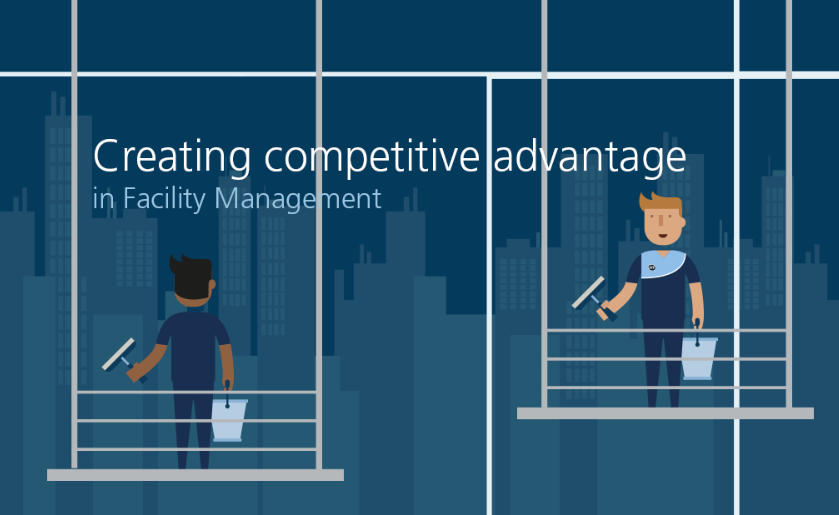
The way people inhabit workspace is changing and so are the workplace strategies people must have in place to attract and retain talent as well as to drive productivity and performance. Here are 7 ways facility managers must fulfill their customer needs and innovate their practices to stay competitive in the facility management industry by 2020.
To stay competitive by 2020, facility management companies must move beyond traditional asset deployment and extend their focus on how to use workspace more efficiently to the benefit of all stakeholders.
This is a widening of the Facility Management role and requires a close collaboration with HR and IT teams to align but also to support the overall company strategy.
To accomplish that companies need to develop sets of more strategically relevant KPIs that measure outcomes such as: ability and speed of knowledge creation; impact of office environment on employee productivity and innovation; impact on culture; customer satisfaction; and ability to adapt to changes in the external environment.
Historically, the facility management success rate has relied heavily on costs and how to get more for less through cost-cutting. Even though cost-cutting will continue to dominate the agenda, with main emphasis on lowering occupancy costs – being a strategic partner will also require finding new ways to create value for the workspace inhabitants and other stakeholders. This can be reflected in adoption of new and forward-thinking technologies that allow more mobility or provide better conditions for employee training, or creation of a healthier workplace environment that can increase employee productivity, decrease absenteeism and minimize overall stress levels.
Given the fact that buildings account for almost 40% of global energy use, sustainability has become an important strategic topic in Corporate Real Estate and Facility Management in particular.
Today, the majority of facility managers are responsible for energy management, health and safety, waste management, recycling, water consumption and carbon footprint management. These responsibilities will expand even more in the years ahead of us.
Because, sustainability is so highly prioritized on the agenda – even at the board level – the pressure on Facility Managers will increase to deliver sustainable solutions across all platforms and activities. The professionals will be forced to rethink all of their existing assets and system into a sustainable framework, including making life-cycle assessments and undertaking life-cycle building management. Training employees in maintaining a sustainable workplace and developing new methods to reduce energy levels, waste and carbon footprint overall, will therefore be one of the key ways to gain new market shares and improve the competitiveness of a facility management business overall.
Space costs money. Knowing that we are moving towards a working environment consisting of virtual or mobile workers, investing time in developing new workplace designs that can suit these new ways of working while increasing space utilization rates can result in impressive cost savings.
Flexible workstations, distributed workplace strategy and mobile workplace strategy are just a few ways of maximizing the value of current properties. Reinvestment can with advantage be allocated to less space, but better space propositions.
Facility management companies keen on developing skills and expertise within workplace design in combination with technology utilization will on that basis be well positioned to experience higher demands.
Towards 2020, more facility managers will be keen to leverage more technology in their service offerings to stay competitive.
For many knowledge workers, today already, the idea of workplace naturally includes concepts such as the virtual workplace. This naturally falls within the domain of facility management and must be considered in the overall service offering.
Technology is and will be important for two reasons. Firstly, it impacts both how we perform our work and where we work. New different types of workplaces – such as assigned workplaces, shared workplaces, home offices, virtual workplaces and flexible offices – emerge.
Facility Management providers must understand and proactively respond to this.
Secondly, facility management professionals must use technology to make these workplaces/spaces efficient and effective by taking all available technologies and applying them to support the employees.
Many facility management technologies are available already, and they must be used and leveraged optimally.
The graphic below presents a list of current and emerging facility management technologies:
News 03-11-2019 22:03:03